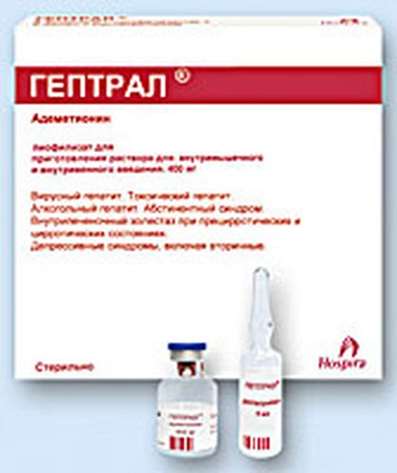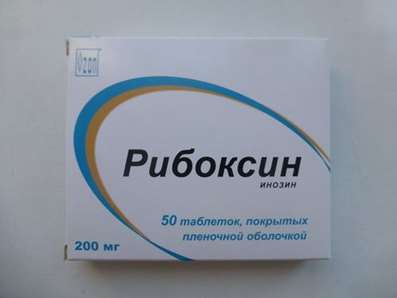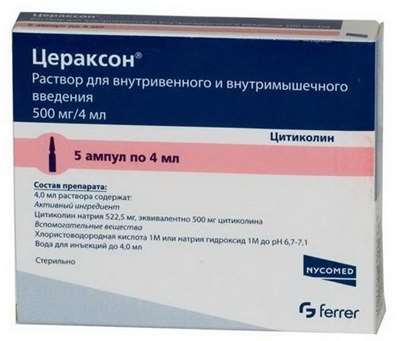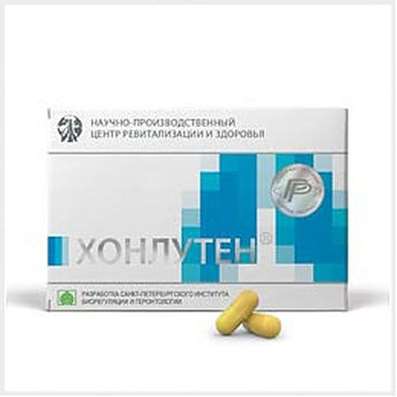Instruction for use: Pentoxifylline
I want this, give me price
Trade name of the drug – Trental, Pentoxifylline, Vasonit, Trental, Agapurin, Pentylin, Pentoxifylline Acry, Pentoxifylline-Teva, Flexital, Agapurin retard, Agapurin 600 retard, Pentoxifylline Rivo, Agapurin SR, Pentoxifylline Sandoz, Trenpental, Pentoxifylline-Darnitsa, Pentoxifylline-Eskom, Pentylin forte, Pentoxifylline-FPO, Pentoxifylline-ICN, Pentohexal, RBflex ™ -100, RBflex ™ -400, Radomine, Ralofect, Pentamon, Pentomere, Ralofect 300 N, Pentoxifylline SR Zentiva, Pentoxifylline Zentiva, Pentoxifylline-SZ
The Latin name of the substance Pentoxifylline
Pentoxyphyllinum (genus. Pentoxyphyllini)
Chemical name
3,7-Dihydro-3,7-dimethyl-1- (5-oxohexyl) -1H-purine-2,6-dione
Gross formula
C13H18N4O3
Pharmacological group:
Antiaggregants
Angioprotectors and microcirculatory correctors
Adenosinergic agents
The nosological classification (ICD-10)
F81 Specific developmental disorders of learning skills: Difficulty concentrating; Attention concentration decrease; Low learnability; Reducing concentration; The difficulty of acquiring specific writing skills; Violations of the learning process; Learning disability in children; Decreased learning ability
F90.0 Violation of activity and attention: Hyperactive child syndrome; Attention Deficit Disorder in Children; Hyperkinetic impulsive syndrome; Violation of attention with hyperactivity; attention deficit; Attention deficit in children; Difficulty concentrating; Concentration reduction; Violation of attention; Impaired concentration; Concentrating defect; Violation of mental activity; Violation of the ability to concentrate; Impairment of concentration; Violations of attention; Inability to concentrate; The weakening of attention; The weakening of the ability to concentrate; Decrease ability to concentrate; Reduced focus; disorders of attention; attention disorder; Attention Deficit Hyperactivity Disorder; Reduced attention; Reduced concentration; Decreased ability to concentrate
H31.9 Vascular system diseases, unspecified: Angiospasm of the choroid; Angiospastic changes in the choroid; Atherosclerotic changes in the retina and choroid; Diseases of the choroid; Change in the mesh and choroid of the eye; Circulatory disturbances in the choroid of the eye; Disturbances of blood supply to the choroid of the eye; Vascular changes in the choroid of the eye; Thrombosis of the arteries of the choroid
H35.9 Retinal disease, unspecified: Retina dystrophy; Vascular pathology of the retina; Angiospastic changes in the retina and choroid; Dystrophic retinal disease; Dystrophic retinal lesion; Dystrophic lesion of the retina of the eye; Change in the mesh and choroid of the eye; Cystoid macular edema after surgical removal of cataracts; Circulatory disturbances in the retina of the eye; Disorders of blood supply to the retina; Disorders of blood supply to the retina; Vascular diseases of the retina; Vascular disorders in the retina of the eye; Vascular spasm of the retina; Retina angiospasm
H80 Otosclerosis
H83.9 Unspecified Disease of inner ear: Spasm of inner ear vessels; Disturbance of blood supply to the inner ear
H91.9 Unspecified Hearing loss: Hearing loss; Hearing Impairment; Hearing loss; Cochleovestibular disorder; Cohleo-vestibular disorder of ischemic nature; Hearing impairment; Sudden Deafness; Hearing impairment of vascular genesis; Hearing loss age; Ischemic impairment of hearing and balance; The phenomenon of accelerated growth of loudness
I63 Cerebral infarction: ischemic Stroke; Ischemic brain disease; Ischemic stroke; Ischemic stroke and its consequences; Ischemic cerebral stroke; Ischemic cerebrovascular accident; Ischemic brain damage; Ischemic brain damage; ischemic conditions; Cerebral ischemia; Acute hypoxia brain; Acute cerebral ischemia; Acute ischemic cerebrovascular accident; Acute cerebral infarction; Acute ischemic stroke; Acute period of ischemic stroke; Focal cerebral ischemia; Ischemic stroke; recurrent stroke; The syndrome of Morgagni-Adams-Stokes; Chronic cerebral ischemia; cerebrovascular stroke; embolic stroke; Ischemic brain damage
I67.9 Cerebrovascular disease, unspecified: lacunarity status; Angioneyropatiya; Arterial angiopathy; brain hypoxia; Encephalopathy; cerebral vascular disease and age-related; Coma in violation of cerebral circulation; Metabolic and cerebrovascular disorders; Violation of the blood supply to the brain; Cerebrovascular accidents; Violation of brain functions; Violation of the functions of the cerebral cortex; Violation of cerebral circulation; Cerebrovascular insufficiency; Acute cerebrovascular insufficiency; Acute ischemic attack; The defeat of the brain vessels; The progression of destructive changes in the brain; Disorders of cerebral circulation; The syndrome of cerebral insufficiency; Cerebral vascular insufficiency; Vascular encephalopathy; Vascular diseases of the brain; Vascular brain disorders; Vascular lesions of the brain; Functional brain disorders; Chronic cerebral ischemia; Chronic heart failure; Chronic cerebrovascular insufficiency; Chronic cerebrovascular insufficiency; Chronic violation of the blood supply to the brain; Cerebral insufficiency; Cerebral organic failure; encephalasthenia; cerebroasthenic syndrome; Cerebrovascular disease; Cerebrovascular pathology; cerebrovascular disease; cerebrovascular disorders; cerebrovascular disorders; Encephalopathy discirculatory
I69.4 Stroke consequences, not specified as a hemorrhage or cerebral infarction: States after a stroke; Post-stroke state; The consequence of a stroke
I69.8 Consequences of other and unspecified cerebrovascular diseases: Consequences of cerebrovascular insufficiency
I73.0 Raynaud's Syndrome: Raynaud's syndrome Leriche; Raynaud's disease; Raynaud's phenomenon; RaynaudLeriche syndrome; Raynaud's disease; Raynaud's syndrome with trophic disorders; Peripheral angiopathy
I73.8 Other specified peripheral vascular disease: Syndrome of intermittent claudication; endarteritis obliterans; acrocyanosis; vasoconstriction; occlusive disease; Intermittent claudication; Disorders of vascular innervation; Spasm of peripheral arteries; Arterial angiopathy; Venous insufficiency and its complications; Spasm of peripheral vessels; The spasm of coronary vessels; endarteritis; cooling stop; Occlusal disorders of peripheral circulation; Peripheral vascular occlusion
I79.2 Peripheral angiopathy in diseases classified elsewhere: diabetic angiopathy; Angiopathy in diabetes; arteriosclerosis diabetic; Pain in lesions of peripheral nerves; Diabetic angiopathy; Diabetic microangiopathy; Diabetic vascular disease; Intermittent angioneurotic disbaziya; Macroangiopathy in diabetes; microangiopathy; Microangiopathy in diabetes mellitus; Tingling sensations in the hands and feet; Coldness in the extremities; Peripheral angiopathy; Peripheral arterial disease; Sclerosis Menkeberga; Chronic obliterating diseases of arteries
I83 Varicose veins of lower extremities: The feeling of heaviness and fatigue in the lower limbs; Varicose disseminated type; varicose veins; Varicose veins of the lower extremities; Varicose disease of lower limbs; Varicose superficial veins; Varicose veins; Varicose vein disease; varicose syndrome; varicose syndrome; Venous claudication; venous varices; venous disease; The disease of the lower extremities; Prevarikozny syndrome; Predvarikozny syndrome; Chronic varicose veins; Sclerotherapy varices
I86 Varicose veins of other sites: Varicose of disseminated type; Varicose disease; Varicose veins diseases
I87.0 Postphlebitic syndrome: post-thrombotic venous insufficiency; Postthrombotic disease; Post thrombophlebitic syndrome; Post-thrombophlebitis; Post-thrombophlebitic syndrome; Postphlebitic syndrome; Post thrombotic syndrome; Postphlebitic syndrome (stasis syndrome)
I99 Other and unspecified disorders of the circulatory system: angiopathy; Arterial angiopathy; Atherosclerotic angiopathy; Hemodynamic right heart defects; Hemodynamic defect of the right heart; coronary angiopathy; Infringement of blood circulation; Violation of circulation; Violation microcirculation in organs and tissues; Peripheral circulatory disorders; Disorders of the peripheral circulation in the extremities; circulatory failure; Hemodynamic instability occlusion of arteriovenous origin; Acute circulatory failure; Psevdostenokardicheskie state; Psevdostenokardicheskoe disorder; circulatory disorder; Cardiovascular diseases; Vascular insufficiency; Thrombosis arteriovenous shunt; Thrombosis with prosthetic heart valves; Deterioration of blood circulation in the pelvic organs; Functional failure of the cardiovascular system; Functional disorders of the cardiovascular system; Chronic arterial insufficiency; Chronic heart failure; Age-related vascular disease; The risk of thrombosis
L89 Decubital ulcer: Decubital gangrene; Bedsores; Bedsore; Secondary-infected bedsores; Gangrene decubital
L98.4.2 * Trophic skin ulcer: Varicose ulcer; Varicose ulcers; Cutaneous ulcer; Non-healing ulcers; Trophic ulcer; Trophic ulcer of lower leg; Trophic skin lesions; Trophic after-burn ulcers; Trophic ulcers; Trophic skin ulcers; Ulcer of lower leg; Ulcer of skin; Ulcer of trophic skin; Ulcer on legs; Ulcerative necrosis of the skin; Ulcer of shin; Ulcer of the lower leg; Ulcers of lower extremities; Difficult healing ulcers
R02 Gangrene, not elsewhere classified: Atherosclerotic gangrene; Gangrene; Gangrene of the extremities; The fire of Saint Anthony
R41.3.0 * Reduced memory: memory loss; memory impairment; The weakening of memory; memory impairment; Forgetfulness; Violation memory; Memory impairment in elderly patients; memory impairment; Memory impairment in relation to recent events
R42 Dizziness and disturbance stability: vertigo; Dizziness; Dizziness and nausea during travel on transport; disorders of balance; vestibular disorders; disequilibrium; Ischemic disorders of hearing and balance
T35 Frostbite, affecting several areas of the body and unspecified frostbite
CAS Code
6493-05-6
Characteristics of substance Pentoxifylline
Purine Derivative. White crystalline powder, soluble in water.
Pharmacology
Mode action - vasodilator, antiaggregational, angioprotective, improving microcirculation.
Inhibits phosphodiesterase, stabilizes cAMP and reduces the concentration of intracellular calcium. It blocks adenosine receptors. It inhibits platelet aggregation; Increases their resistance to deformation, improves the rheological properties of blood, inhibits thrombogenesis and normalizes microcirculation. The antianginal effect (increased oxygen delivery to the myocardium) is due to the expansion of the coronary arteries. Dilates the vessels of the lungs and improves oxygenation of the blood. Increases the tone of the respiratory musculature (intercostal muscles and diaphragm).
After oral administration, it is quickly and completely absorbed. Intensively biotransformed at the "first pass" through the liver with the formation of two major metabolites: 1- (5-hydroxyhexyl) -3,7-dimethylxanthine (metabolite-1) and 1- (3-carboxypropyl) -3,7-dimethylxanthine (metabolite- 5). Cmax pentoxifylline and the main products of its biodegradation is achieved within 1 hour (for prolonged forms - after 2-4 hours), while the concentration of metabolites exceeds the content of the starting compound 5-8 times. T1 / 2 varies between 0.5-1.5 hours. In patients with impaired liver function T1 / 2, pentoxifylline is extended, and bioavailability is increased. Excreted mainly by the kidneys (in the form of metabolite-5) and with feces (less than 4%).
Application of substance Pentoxifylline
Violation of peripheral circulation (including obliterating endarteritis, diabetic angiopathy, Raynaud's disease); Atherosclerotic and dyscirculatory angiopathy, angioneuropathy; Trophic tissue disorders (including varicose veins, trophic ulcers of the lower leg, gangrene, frostbite, post-thrombotic syndrome); Impaired cerebral circulation (consequences of cerebral atherosclerosis, for example, reduced concentration, dizziness, memory impairment), ischemic and post-insult conditions; Violation of blood circulation in the retina and choroid of the eye; Otosclerosis, degenerative changes on the background of the pathology of the vessels of the inner ear and hearing loss.
Contraindications
Hypersensitivity, incl. To other methylxanthine derivatives (caffeine, theophylline, theobromine), hemorrhagic stroke, massive bleeding, extensive bleeding in the retina, acute myocardial infarction, pregnancy, breast-feeding.
For I.V. introduction (in addition): arrhythmia, severe atherosclerosis of the coronary or cerebral arteries, uncontrolled arterial hypotension.
Restrictions
Lability of blood pressure (tendency to arterial hypotension), chronic heart failure, peptic ulcer of stomach and duodenum, impaired renal function (clearance <30 ml / min), severe liver dysfunction, recent surgery, increased tendency to bleeding, age 18 Years (safety and efficacy not determined).
Pregnancy and breast-feeding
Contraindicated in pregnancy.
The action category for fetus by FDA is C.
For the duration of treatment, breastfeeding should be stopped (penetrates into breast milk).
Side effects of substance Pentoxifylline
From the nervous system and sensory organs: headache, dizziness, anxiety, sleep disturbance, convulsions, vision disorders, scotoma; Very rarely - aseptic meningitis.
From the cardiovascular system and blood (hematopoiesis, hemostasis): tachycardia, cardialgia, arrhythmia, angina pectoris progression, lowering of blood pressure, leukopenia, pancytopenia, thrombocytopenia, hypofibrinogenemia.
On the part of the intestine: dry mouth, decreased appetite, intestinal atony, exacerbation of cholecystitis, cholestatic hepatitis, increased activity of hepatic enzymes (AST, ALT, APF, LDH).
From the skin and subcutaneous fat: hyperemia of the skin of the face, flushing of the blood to the face and upper chest, swelling, increased brittleness of the nails.
Allergic reactions: itching, facial skin hyperemia, urticaria, angioedema, anaphylactic shock.
For tablets additionally: feeling of pressure and overflow in the area of the stomach, nausea, vomiting, diarrhea.
Interaction
Pentoxifylline is able to enhance the action of drugs that reduce blood pressure (ACE inhibitors, nitrates). May enhance the effect of drugs that affect the blood coagulation system (indirect and direct anticoagulants, thrombolytics), antibiotics (including cephalosporins). Cimetidine increases the concentration of pentoxifylline in the blood plasma (risk of side effects). Co-administration with other xanthines can lead to excessive nervous excitement. The sugar-reducing effect of insulin or oral antidiabetics can be enhanced by taking pentoxifylline (an increased risk of hypoglycemia, strict monitoring of the condition of such patients is necessary). In some patients, simultaneous use of pentoxifylline and theophylline may lead to an increase in the level of theophylline in the blood and an increase in the side effect of theophylline.
Overdose
Symptoms: weakness, dizziness, decreased blood pressure, sensation of hot flashes, drowsiness or agitation, impaired consciousness, convulsions.
Treatment: gastric lavage, the appointment of activated charcoal, anticonvulsants, maintenance of vital functions.
Routes of administration
Inside, I.V., intraarterial, intramusculary.
Precautions for substance Pentoxifylline
Treatment should be carried out under the supervision of AD.
In patients with diabetes mellitus, who take hypoglycemic drugs, the administration of large doses can cause severe hypoglycemia (dose adjustment is required).
At appointment simultaneously with anticoagulants it is necessary to watch carefully indicators of a coagulating system of a blood.
In patients who have recently undergone surgery, systematic monitoring of the level of hemoglobin and hematocrit is necessary.
The administered dose should be reduced in patients with low and unstable blood pressure.
In elderly people, a dose reduction may be required (increased bioavailability and reduced rate of excretion).
Smoking can reduce the therapeutic effectiveness of the drug.
The compatibility of a solution of pentoxifylline with the infusion solution should be checked in each case. When carrying out intravenous infusions the patient should be in a prone position.

 Cart
Cart





